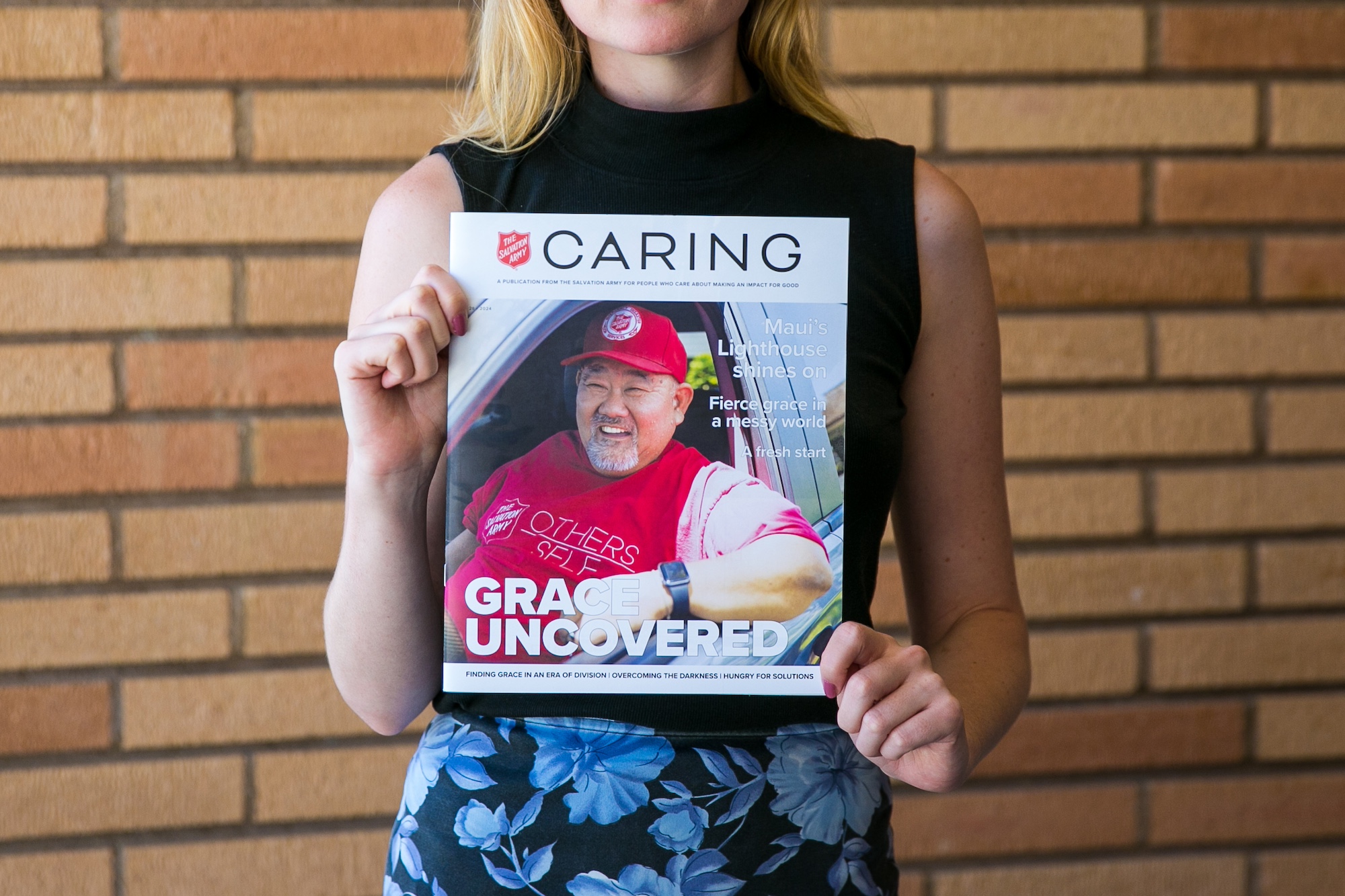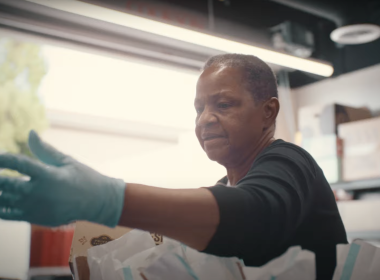Doing the Most Good. . .in the mission field
by Sandy Moss –
Salvation Army team member Mike Shepard took a break from working on the school to spend some time with some of his favorite folks in Africa.The Congolese children are some of the most charming and endearing in the world. |
Africa’s Congo is a place the rest of the world chooses to forget, not because it is forgettable, but because once known, it becomes an ache in the marrow, a shadow in the heart. It is, in the world’s vernacular, “The Heart of Darkness,” but nowhere on earth do the children’s eyes shine more brightly or are the people warmer or more eager for peace.
Recently, a group of Christian soldiers chose not to forget.
Fifteen volunteers from the Southwest Division of The Salvation Army carried their saws and drills and good intentions 10,000 miles across continents and ocean to make what little difference they could for the Congo’s most precious resource: their beautiful children. In turn, the team members brought back a knowledge of the Congo’s great heart––not dark at all, only hungry.
The Democratic Republic of the Congo (DRC), once the Belgium Congo and Zaire, is roughly one-quarter the size of the United States, a land of savage beauty and an even more savage history. Droughts, floods and active volcanoes are commonplace, as are dictators, corrupt officials, exploitation by other nations, and civil wars. In the past seven years alone, an estimated four million people have died in rebel conflicts throughout the Congo.
The Congolese live day-to-day adapting as they can to a life of unease and crushing poverty, an unchanging way of life in the Congo.
Like most goods and services in the DRC, education is a commodity often not affordable to the average citizen, yet many Congolese see education as a way to improve their lives and build a positive future for their war-torn country.
In 1935, the Congolese government, then Zaire, turned the operation of the schools over to seven major religious groups, including The Salvation Army, which today runs 254 schools in the Congo, educating more than 75,000 students from kindergarten through university level.
But in a country as devastated as the Congo, the reality is that providing an adequate education comes at no little cost and many of the Army schools are in disrepair or need complete restoration.
The primary school at Mbenseke, (pronounced “benseekee”), a village on the outskirts of Kinshasa, DRC’s capital city, was made of only sticks and grass with dirt floors and a thatched roof. When the rainy season was in full force—roughly October through May—oftentimes the 350 children of Mbenseke, unprotected in the little grass school, were sent home in the downpour with drenched books and clothing.
When this came to the attention of Lt. Colonel Mervyn Morelock, a retired Salvation Army officer from the Southwest Division, he determined to find a way to build a new school for the young children of Mbenseke.
On a visit there in 2003, Morelock noticed a pile of building blocks near the school. Officials said the parents had been buying the expensive two-dollar-apiece blocks from their meager paychecks in an effort to eventually build a proper school for their children.
As part of a partnership with the Congo—the CAPstone Project (Congo Action Plan)—to improve education for the children there, the Southwest Division, with the wholehearted support of Lt. Colonels Don and Jan Mowery, divisional leaders, began raising money to buy materials and send a team to Africa to rebuild a school for the Mbenseke children.
For 18 busy days in September, assisted by parents, African workers, and even some of the children, the 15-member Salvation Army team did an extreme makeover on the stick and grass school, building in its place a seven-classroom block school, 90 sturdy wooden desks, and installing part of the school’s corrugated tin roof, which African Salvation Army volunteers will complete.
More than 1,000 attended a stirring dedication for the new school, including the vice-governor of Kinshasa, Vinda Phumu Malonda, two bodyguards and a police escort a la machine gun (a common sight in Africa). To the lively music of a large, white-uniformed Salvation Army brass band, the enthusiastic Congolese swayed and whooped in endearing joy and sang every song at full tilt, their clear astounding voices ringing out to the accompaniment of drums, maracas and cowbells. When the Africans celebrate, they truly reflect Psalm 100:1—“shout for joy to the Lord; come before Him with joyful songs.” To say they were thrilled with the new facility would be an understatement.
Finally, with the rainy season approaching, the young children of Mbenseke can learn in a sturdy, clean and dry school.
The Salvation Army team members have returned to the United States, carrying tender memories of a desperate country and a warm and exuberant people. To them, Africa will never be forgotten, and, without a doubt, some Africans will not forget them.











